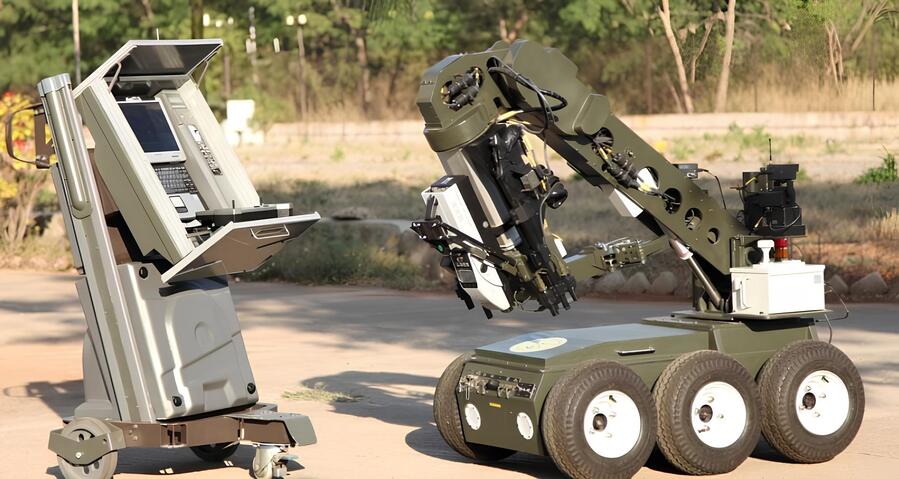By Mahbano Zahid
The tech boom of the twenty-first century is changing every aspect of life, but nowhere are the stakes higher or the impact more noticeable than in South Asia’s. The same innovations that promise improved governance and faster growth are rushing onto the battlefield, upending the precarious power dynamics in the region.

With billions being invested in next-generation missiles, drone swarms, and AI-enabled command systems, India, the largest economy on the subcontinent, is currently at the forefront of this change. Though it may fulfill a desire for prestige and deterrence, its quick military modernization runs the risk of causing new instability in an already unstable region.
India’s aspirations are not merely hypothetical. An Agni-V intercontinental ballistic missile equipped with multiple independently targetable reentry vehicles (MIRVs), a single rocket that can drop multiple nuclear warheads on various cities, was flight-tested in New Delhi in March 2024. The technology “fuels a full-scale arms race” by speeding up decision-making and making missile-defense calculations more difficult for China and Pakistan.
In November 2024, India joined the elite club of hypersonic powers following a test by the Defence Research and Development Organization (DRDO) of a Mach-5-plus missile that could maneuver erratically and breach any known interceptor shield. The already slim margin for error between rivals with nuclear weapons is further reduced by hypersonic weapons, which reduce warning times to minutes.
India is also making rapid progress in unmanned space. The Indian Army launched its first known drone-on-military assault on Pakistani air defense sites in Lahore and Multan on May 9, 2025, using loitering suicide drones to carry out precise strikes. In addition to showcasing a fleet of AI-guided platforms capable of identifying targets and striking without endangering pilots.
Moreover, with the introduction of Russian-made S-400 missile defense batteries, the drive for quantum-secure communications, and initiatives like the National Mission on Quantum Technologies and the Defence Artificial Intelligence Council, India’s toolkit starts to resemble a menu of escalation options rather than just deterrents. Every new development tightens what strategists refer to as the “action–reaction” spiral in the region.
What makes this risky? First, crisis stability is complicated by MIRVs and hypersonics. A leader has an incentive to attack first if they are worried about losing their troops “in the opening salvo.” Second, autonomous drones shorten the decision-making process because software, not human judgment, can escalate or terminate a conversation in a matter of seconds. Third, the crisis-management hotlines, no-first-use understandings, and arms-control practices that saved the US and the USSR from disaster during their own Cold War are still absent from South Asia.
Pakistan is aware of the danger, but its capacity to keep up is limited by its economic limitations, energy scarcity, and ongoing socio economic issues. Although Pakistan’s declared objective of enhancing intelligence, surveillance, and reconnaissance is reasonable, the disparity will grow unless it is combined with more extensive economic and governance reforms.
As they construct their own digital futures, the smaller South Asian nations like Bangladesh, Nepal, and Bhutan observe with unease. Blockchain IDs and AI-powered disaster relief are celebrated in their “Smart Bangladesh,” “Digital Nepal,” and “Digital Drukyul” plans; however, every dollar diverted to defense technology is a dollar not used for poverty alleviation or climate resilience.
What then needs to be done? Three steps are particularly noticeable. First, a trilateral discussion on emerging-tech risk reduction is required between China, India, and Pakistan. This discussion should resemble U.S-Soviet discussions that resulted in test-ban treaties and hotlines. Second, transparency measures like shared AI safety protocols, data-exchange centers, and pre-launch notifications should be implemented by regional powers. Third, standards that maintain meaningful human control over autonomous and hypersonic weapons must be pushed for by international organizations, such as the Shanghai Cooperation Organization and the United Nations.
The calculus that humans construct around technology is not neutral; technology itself is. Although India’s pursuit of ever-more-advanced arrows may seem like a strategic “catch-up,” in a nuclear-populated area, even a single misinterpreted tweet or radar malfunction could turn innovation into disaster. Digital technologies have the potential to bring prosperity to South Asia, but only if its leaders are unwilling to allow them to turn into sources of instability. They still have the option of choosing a more dangerous or smarter area.
Author: Mahbano Zahid – Research Intern at Balochistan Think Tank Network Quetta (BTTN), Buitems, Quetta, Pakistan.
(The opinions expressed in this article are solely those of the author and do not necessarily reflect the views of World Geostrategic Insights).
Image Source: iadb.in







